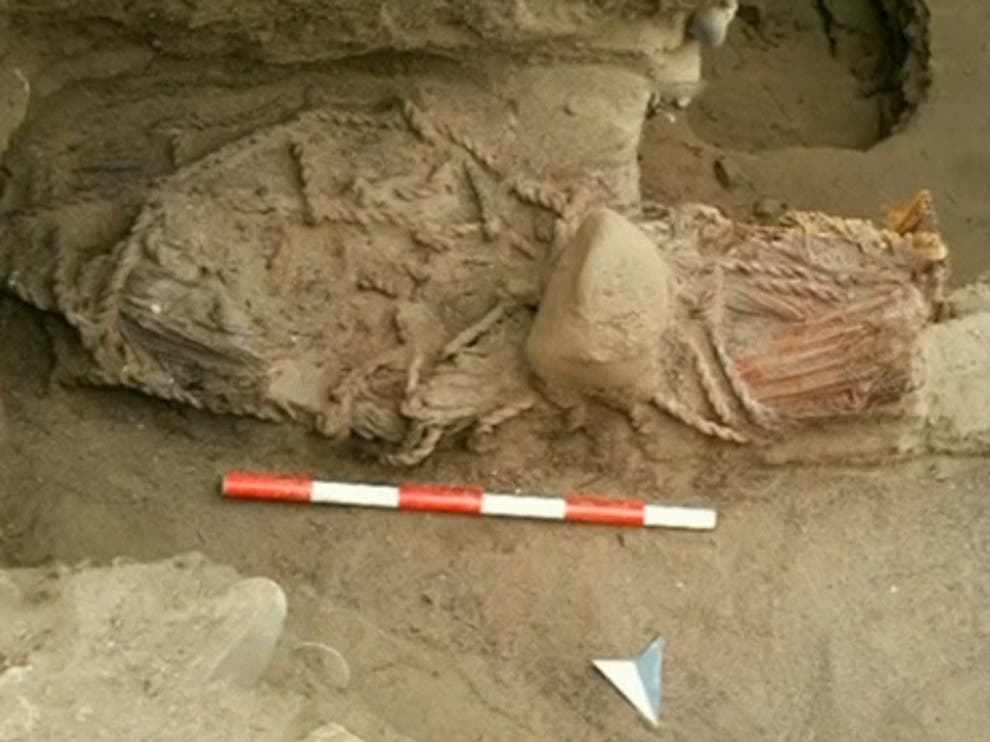4,500-year-old female mummy discovered in Peru
This footage shows a 4,500-year-old mummy which has been unearthed by archaeologists in Peru. She is believed to be a noblewoman and can be seen wrapped in burial cloths.
She was buried in the ancient fishing village of Aspero in northern Peru along with objects featuring carved details of both coastal and jungle animals like birds and monkeys.
Experts believe the discovery is hugely significant and will provide insights into the ancient Caral civilisation.

The images of the coastal and jungle animals indicate possible trade between Aspero and the city of Caral, the most ancient civilisation of its kind in South America and the precursor of the Incas.
The two regions are located 14 miles from each other.
Ruth Shady, director of the Caral Archaeological zone, explained the significance of the discovery
She said: “In the settlements of the Caral civilisation there are sometimes burials.
“The sacrifice of human beings are not regular, they’re very rare.”
“In this case, it is a woman of 40 to 50 years who was buried with evidence and objects that allow us to identify her as a woman of important social status,” she continued.
“Her remains were with offerings of objects brought from different places,” Ruth continued.
“These objects, carvings depict different images from the jungle.”
“What we can infer on the basis of recovered evidence of a society which began the stage of civilisation formation 5,000 years ago in relation to settlement dwellers in the Super Valley,” she added.

The Caral civilisation dates back to 2,600 BCE and its archaeological site reportedly predates Inca civilisation by some 4000 years.





